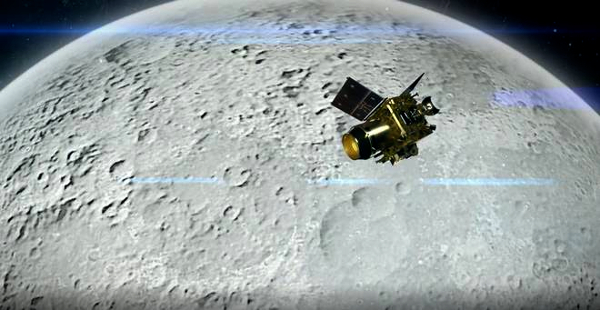BENGALURU: India’s second Moon mission, Chandrayaan-2, has entered Moon’s orbit early on Tuesday (August 20). Confirmations about the successful Lunar Orbit Insertion (LOI) are just trickling out of the Indian Space Research Organisation (Isro), whose chairman K Sivan will hold a press briefing about this at 11am in Bemgaluru.
Now that Chandrayaan-2 has completed its trek to Moon, it is just days away from Moon landing, which will put it in an elite club of nations—the US, USSR (now Russia) and China—to have successfully landed probes on the lunar surface.
The project, which has cost India Rs 978 crore has seen wide participation from institutions from around the country.” Nearly 500 universities and 120 industries have played a role in GSLV MkIII and Chandrayaan2 respectively. And, 80% and 60% of the cost has gone to these,” Sivan had said.
If reaching Moon’s orbit is one part of the mission—Isro had already put a satellite around Moon in 2008 (Chandrayaan-1)—the more crucial part of Chandrayaan-2 would be to land Vikram, it’s lander on Moon.
Now that LOI is achieved, Isro will perform four more manoeuvres—on August 21, 28, 30 and September 1—to take the spacecraft to lower orbits and eventually make it settle in an 100kmX100km orbit, where it will spend the rest of its life.
After the last manoeuvres on September 1, Chandrayaan-2 is likely to be in a 114kmX 128km orbit. After reaching the desired orbit around Moon, Isro had said: “Vikram will separate from the orbiter on September 02. Two orbit maneuvers will be performed on the lander before the initiation of powered descent to make a soft landing on the lunar surface on September 07.”
“The final descent of the lander will be 15 terrifying minutes for us, as it is something we’ve never tried before. It is one of the most complex operations we’ve ever handled,” Sivan said.
Chandrayaan-2 is carrying a total of 14 payloads—13 Indian and one passive payload from Nasa—with special focus of the orbiter on mapping craters in the polar region, besides checking for water again.
While that’s for the orbiter, the rover payloads will check on mineralogical compositions on the Moon and determine the composition (what elements it contains) of lunar rocks and soil and instruments on the lander will focus on measuring thermal properties and seismicity among other things.
Chandrayaan-2 Will carry forward India’s legacy after the first lunar mission and the Mars Orbiter Mission (MOM), the Indian Space Research Organisation (Isro) said.
“The mission is mainly to make use of space tech to help the common man lead a better life and to ensure safety, security and quality. Cyclone predictions, broadband to rural India et al are just examples of how the common man is linked with space tech. But along with this we are also looking at space science,” Sivan had said.
“Even Vikram Sarabhai was faced with a question of why space when farmers are struggling. Today you may ask why we need to explore planets and satellites when we have other objectives, but let me assure you that these are crucial.”
Source: ToI
Image Courtesy: TH
You may also like
-
New Heat-Based Approach To Cancer Treatment Can Reduce Chemotherapy Doses
-
Scientists Take A Major Step Towards Unification Of Classical & Quantum Gravity
-
India Graphene Engineering and Innovation Centre (IGEIC) Under the Vision of Viksit Bharat@2047 Launched
-
New High-Performance Gas Sensor can Monitor Low Level Nitrogen Oxides Pollution
-
Antidepressant Drug can be Repurposed for Treating Breast Cancer
